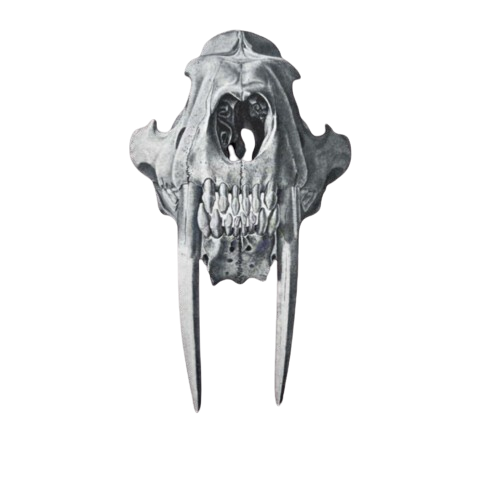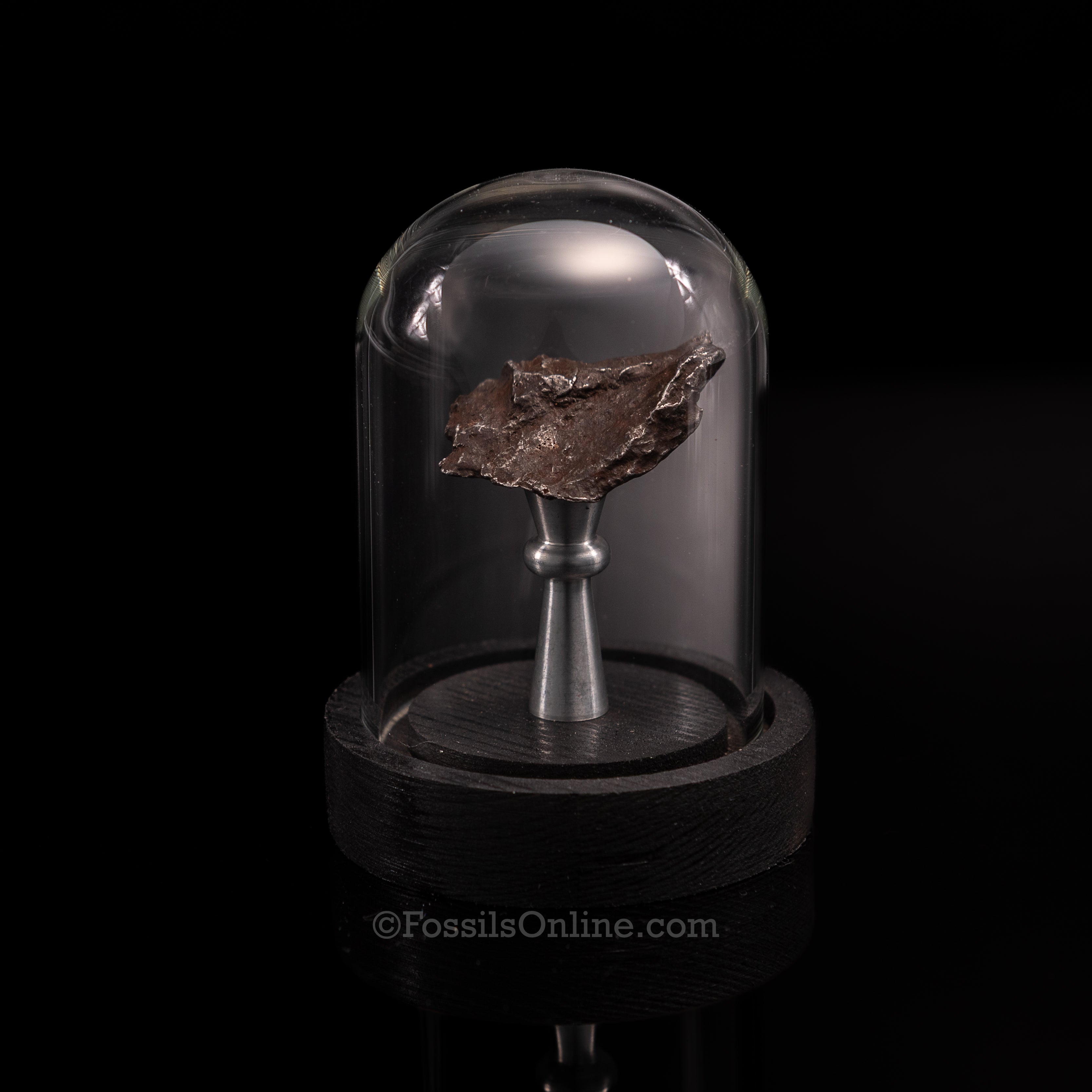
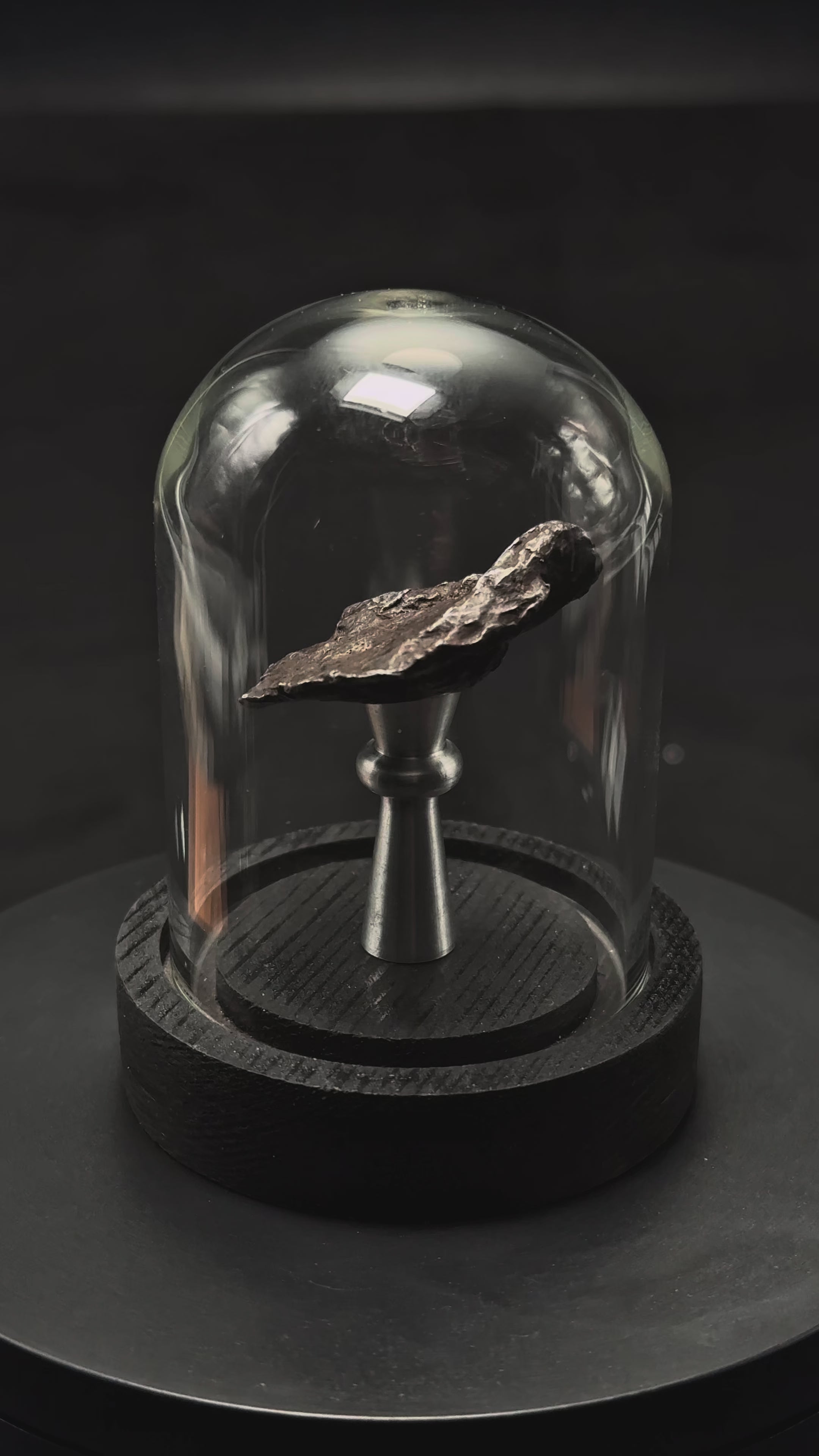
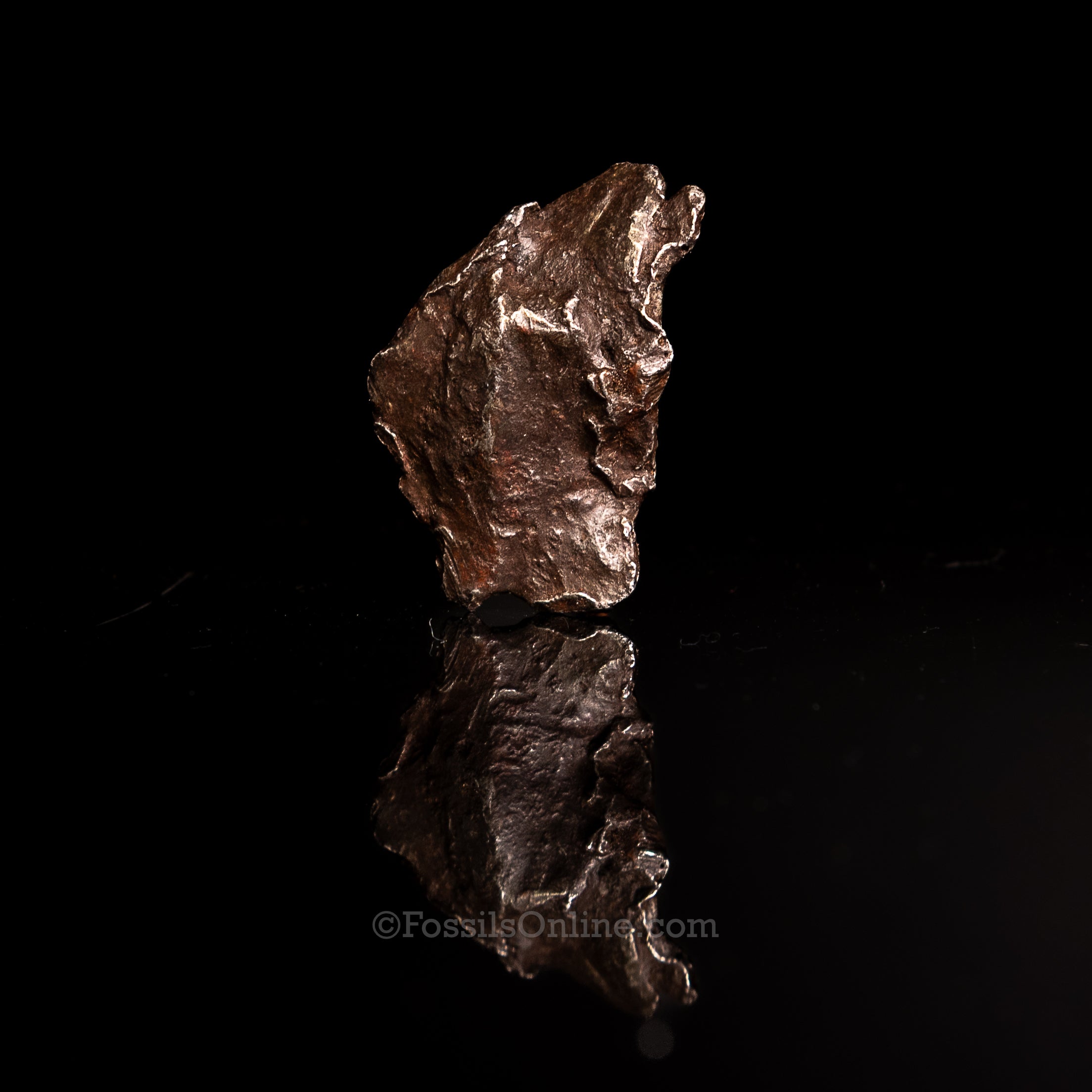
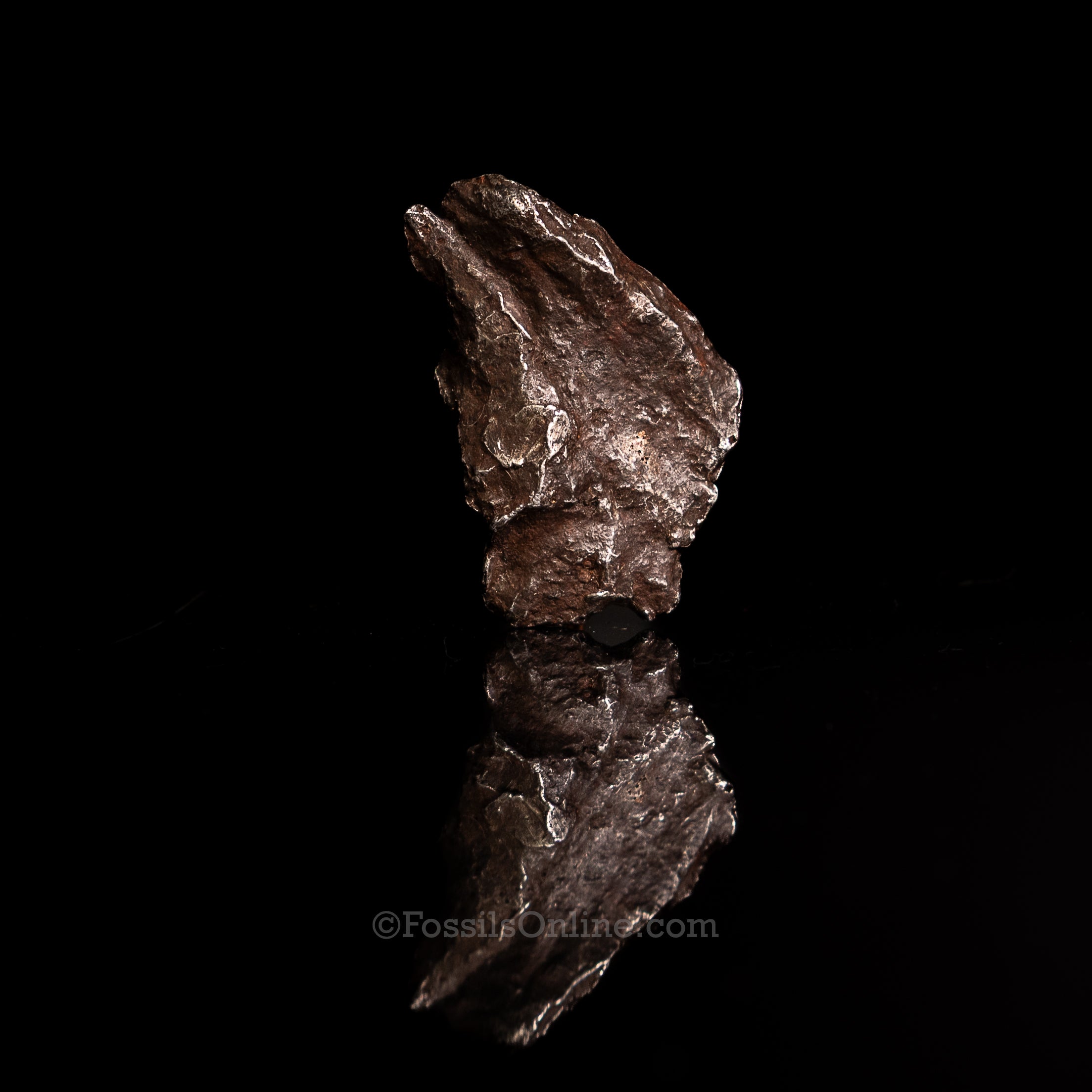
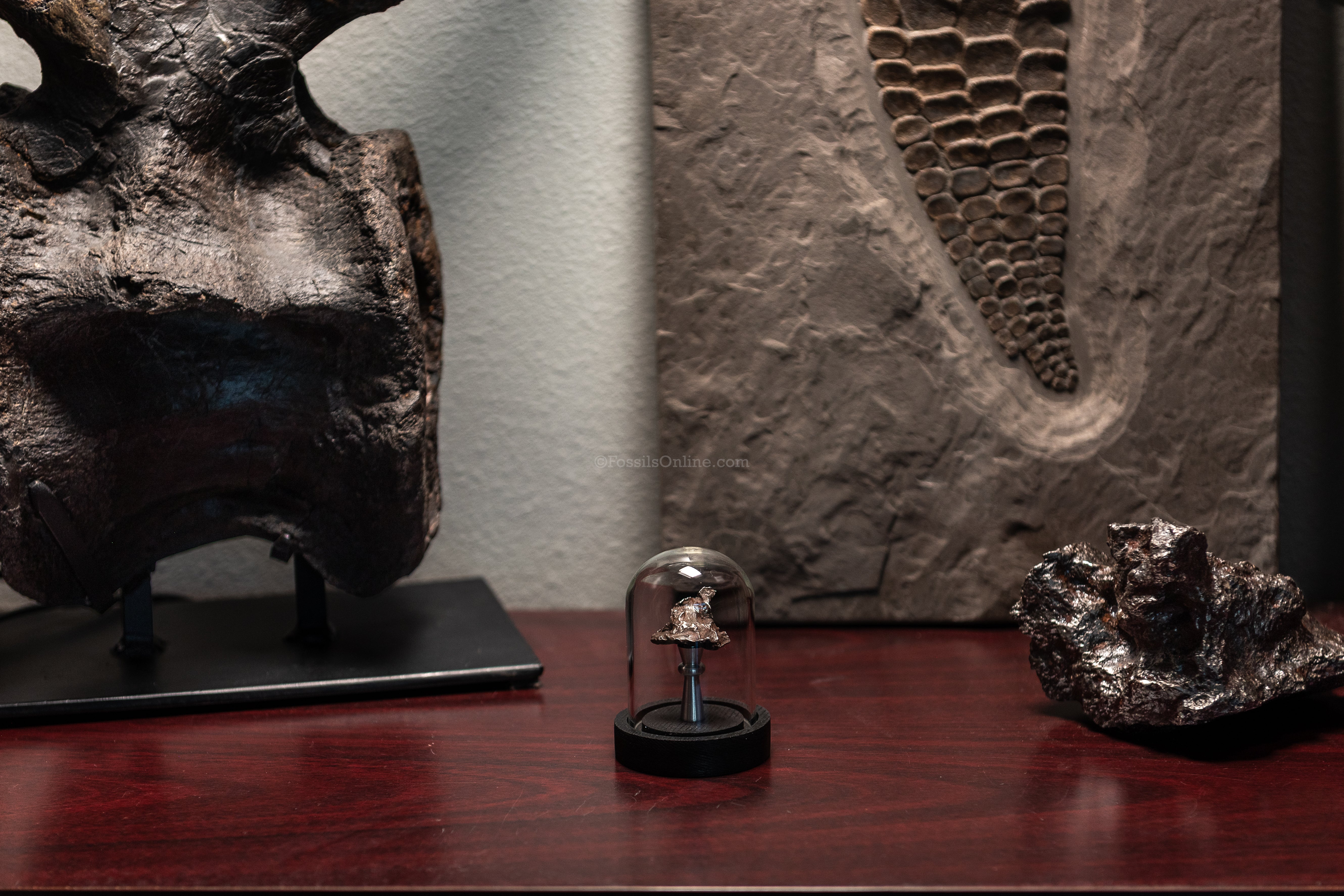
Genuine Sikhote-Alin Meteorite in Glass Dome
Own a collectible from out of this world.
This famous fall was witnessed on the morning of February 12, 1947 in Eastern Siberia. Imagine the site of a fireball as bright as the sun in the sky heading towards earth.
It’s classification is Iron, IIAB, Coarsest Octahedrite
You are not just looking at a rock; you are looking at a frozen moment from one of the most violent and spectacular cosmic events in modern history. This fragment is from the Sikhote-Alin meteorite, and its twisted, jagged shape tells an incredible story of its fiery arrival on Earth.
The Fall: A Fireball Brighter Than the Sun
Imagine a cold, clear morning in the snowy wilderness of Siberia. It’s February 12, 1947. Suddenly, the sky is torn apart by a point of light more brilliant than the sun itself. A massive fireball, weighing over 100 tons, blazes across the atmosphere at more than 30,000 miles per hour.
Witnesses were stunned. The intense heat could be felt on their skin, and deafening sonic booms, like artillery fire, echoed for hundreds of miles. The fireball left a thick trail of smoke and dust that hung in the sky for hours, a stark reminder of the celestial visitor.
What is "Shrapnel" and How is it Different?
The Sikhote-Alin fall produced two very different kinds of meteorites, which is part of what makes it so fascinating.
-
Individuals: These are smoother, sculpted pieces that often feature "regmaglypts"—thumbprint-like scoops on their surface. These fragments broke off high in the atmosphere and were slowed down by air resistance, allowing the air to melt and shape them like a piece of clay held against a fast-moving stream of water.
-
Shrapnel (Like This Piece): The main body of the meteoroid did not slow down enough. The immense pressure and heat became too much, and at an altitude of only 3.5 miles (5.6 km), it violently exploded. This catastrophic detonation ripped the solid iron body apart, creating a shower of jagged, twisted, and sharp-edged fragments.
These pieces are called shrapnel because they are the direct result of a mid-air explosion, exactly like the metal fragments from an exploding artillery shell. Their sharp, violent shapes are physical proof of the incredible forces that tore them apart. When you hold a piece of Sikhote-Alin shrapnel, you are holding a tangible piece of that cosmic blast.
An Ancient Wanderer's Journey
-
Origin: Where did this piece of iron come from? It is the metallic core of an ancient protoplanet, or a very large asteroid, that formed along with Earth and our solar system. This body was once large enough to have a molten core, a mantle, and a crust, but a catastrophic collision with another object shattered it billions of years ago. This fragment is a piece of that long-lost core.
-
Age: This meteorite is approximately 4.56 billion years old—as old as the Sun and the Earth itself. It wandered through the cold vacuum of space for millions of years before its journey finally ended in the mountains of Siberia.
How Do We Know How Old It Is?
Scientists determine the age of meteorites through a process called radiometric dating. Think of it like a perfect, atomic clock.
Certain elements in the meteorite, like Uranium, are naturally unstable and "decay" into other, more stable elements, like Lead, at a constant, predictable rate. By carefully measuring the ratio of the original "parent" element to the stable "daughter" element, scientists can calculate with incredible accuracy how much time has passed since the iron in this meteorite first crystallized from a molten state, 4.5 billion years ago.
When you purchase one of these historic specimens, you acquire a true piece of space and time—a witness to the birth of our solar system and a survivor of one of the most powerful meteorite impacts in recorded history.
Trusted Sources & Further Reading
For those who wish to learn more, here are some excellent resources:
- The Meteoritical Society's entry for Sikhote-Alin: This is the official scientific record of the meteorite, with technical data about the fall and composition.
- Natural History Museum, London: An excellent overview of iron meteorites and their origins.
Size
The meteorite weighs 21 grams and measures 1.5" x .94". The dome measures 3.25" high. The base is 2.41" in diameter.
Care guide
Choose options





